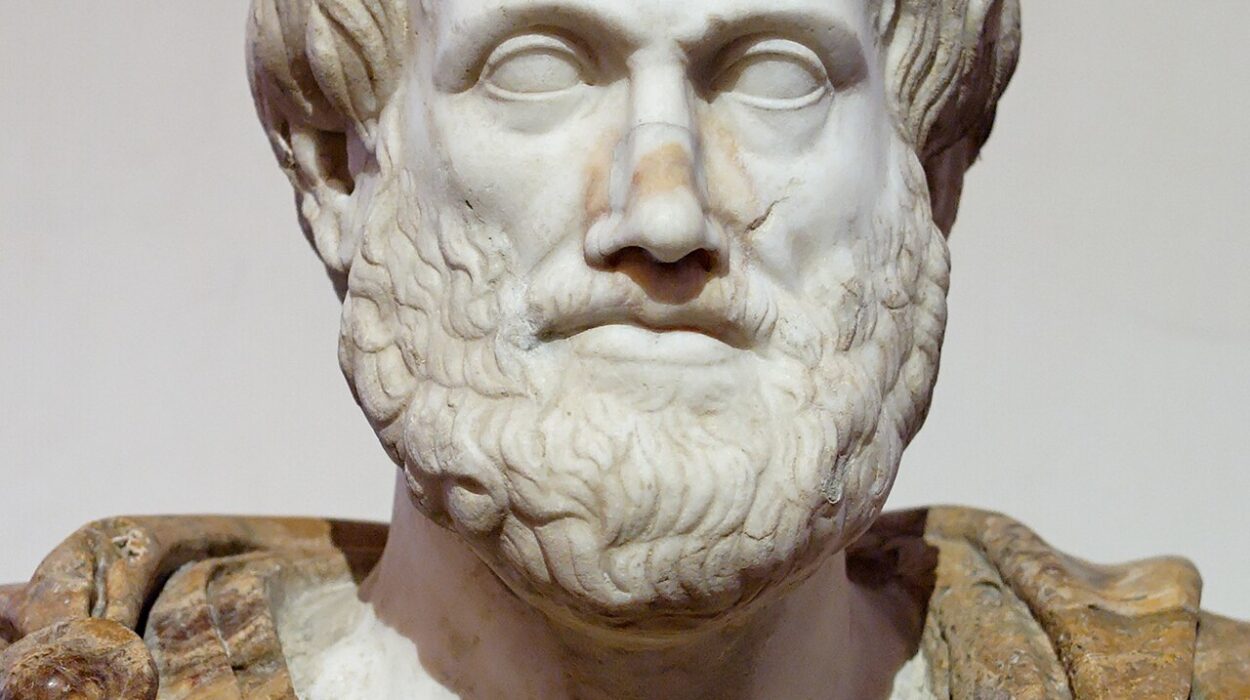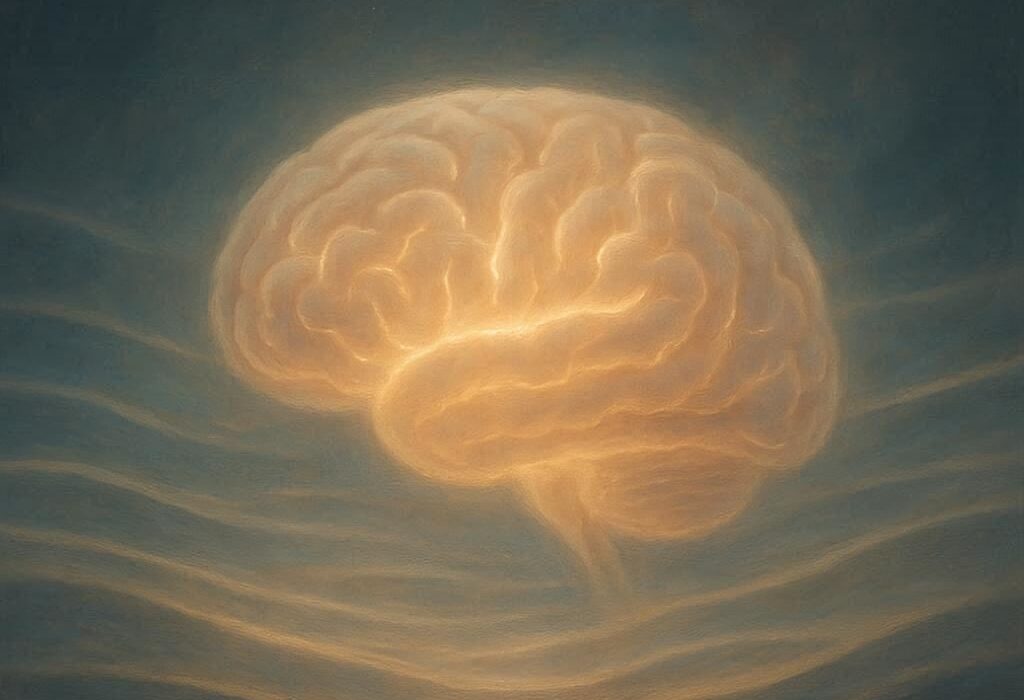Emotions are among the most profound and mysterious aspects of human experience. They shape our thoughts, behaviors, and decisions, influence our relationships, and define what it means to be human. From the rush of joy at a child’s laughter to the tightening fear in a moment of danger, emotions color every perception of the world. But what are emotions, and how does the brain create them?
Neuroscience, the study of the nervous system and the brain, has made extraordinary progress in uncovering the biological foundations of emotions. Over the past century, scientists have moved from philosophical speculation to identifying the precise neural circuits, chemical messengers, and brain regions that give rise to feelings such as fear, joy, and love. Far from being abstract or purely psychological, emotions emerge from concrete physical processes—patterns of neural activity that evolved to help organisms survive, adapt, and connect with others.
Understanding the neuroscience of emotions does more than satisfy curiosity. It illuminates why humans behave the way they do, offers insights into mental health and disease, and deepens our appreciation of how biology and consciousness intertwine. To grasp how fear, joy, and love arise in the brain is to explore the very essence of life’s emotional tapestry.
The Biological Purpose of Emotions
Emotions are not random sensations; they are biological mechanisms shaped by evolution to guide behavior in ways that increase survival and reproduction. Long before humans developed language or culture, emotional systems helped our ancestors react quickly to threats, seek nourishment, form social bonds, and reproduce.
Fear, for example, evolved as a survival mechanism to prepare the body for danger—either to fight, flee, or freeze. Joy, or positive affect, reinforces behaviors that are beneficial, such as finding food, achieving goals, or bonding with others. Love binds individuals together, ensuring mutual care, protection, and the raising of offspring.
Emotions thus function as the brain’s motivational compass. They provide rapid, often unconscious assessments of the environment and trigger physiological responses before conscious thought catches up. These emotional reactions can then influence higher cognitive processes like reasoning, memory, and decision-making.
Modern neuroscience has shown that emotions are neither purely instinctual nor purely rational—they are an intricate blend of both. The limbic system, a network of brain structures involved in emotion and memory, interacts with the prefrontal cortex, the seat of planning and judgment, allowing emotional experiences to be integrated with thought.
The Evolution of Emotional Brains
The human brain is a product of millions of years of evolution. Emotional processing has ancient roots that can be traced through the animal kingdom. Even reptiles exhibit primitive fear responses, while mammals display more complex social emotions.
In the early 20th century, neuroscientist Paul MacLean proposed the triune brain model, suggesting that the human brain evolved in three layers: the reptilian brain (responsible for basic survival functions), the limbic system (responsible for emotions), and the neocortex (responsible for higher cognition). Though modern research has refined this view, the core idea remains that emotions are built upon deeply conserved neural mechanisms.
The limbic system, which includes structures such as the amygdala, hippocampus, hypothalamus, and cingulate cortex, plays a central role in generating emotions. These regions communicate with the prefrontal cortex, integrating emotional signals with cognitive control. Together, they allow humans to feel, interpret, and regulate emotional states in nuanced ways.
The Limbic System: The Emotional Core of the Brain
The limbic system is often called the brain’s “emotional center.” Although not a single, clearly bounded structure, it represents a functional network that coordinates emotion, motivation, memory, and behavior.
At its heart lies the amygdala, an almond-shaped cluster of nuclei located deep within the temporal lobes. The amygdala is central to processing emotional stimuli, especially those related to fear and threat detection. It receives sensory input from the thalamus and cortex, rapidly assessing whether something is dangerous or rewarding. When danger is perceived, the amygdala activates the hypothalamus and brainstem, triggering physiological changes such as increased heart rate, pupil dilation, and the release of stress hormones.
The hippocampus, another key limbic structure, interacts with the amygdala to associate emotions with memories. This link between emotion and memory is why emotionally charged events are often remembered vividly. The hypothalamus serves as a bridge between the nervous and endocrine systems, translating emotional states into hormonal responses that influence the body’s internal environment. The anterior cingulate cortex and the orbitofrontal cortex contribute to emotional awareness, empathy, and regulation.
Together, these structures create a dynamic system that processes sensory information, assigns emotional value, and drives adaptive behavior.
The Role of Neurotransmitters and Hormones in Emotion
Emotions are not only patterns of neural activity but also chemical phenomena. Neurotransmitters and hormones act as messengers that modulate emotional states, linking brain activity with bodily responses.
Dopamine is often called the “reward neurotransmitter.” It plays a crucial role in motivation, pleasure, and reinforcement. When we experience something rewarding—like eating delicious food or hearing good news—dopamine is released in the brain’s reward pathway, which includes the ventral tegmental area (VTA) and the nucleus accumbens. This creates a sense of pleasure and encourages repetition of the behavior that led to it.
Serotonin regulates mood, sleep, and social behavior. Imbalances in serotonin levels are linked to depression and anxiety. Norepinephrine (noradrenaline) is associated with arousal and alertness, heightening attention during emotionally significant events.
Oxytocin and vasopressin, hormones produced in the hypothalamus, are critical for social bonding and attachment. Oxytocin, sometimes referred to as the “love hormone,” promotes trust, empathy, and intimacy, especially during close human interactions like childbirth, breastfeeding, and romantic attachment.
Cortisol, the primary stress hormone, is released by the adrenal glands during fear or threat. It mobilizes energy and sharpens focus but can have damaging effects if chronically elevated, contributing to anxiety and depression.
Emotions, therefore, are shaped by a delicate balance between these chemical messengers. Their interactions create the spectrum of feelings that define our mental and social lives.
How the Brain Creates Fear
Fear is one of the most thoroughly studied emotions in neuroscience because of its clear survival function and measurable physiological markers. The amygdala is the central hub of fear processing. When a potential threat is detected, sensory information is relayed from the thalamus to the amygdala via two pathways—a fast, unconscious “low road” and a slower, conscious “high road.”
The low road sends crude sensory data directly from the thalamus to the amygdala, enabling an immediate response even before conscious awareness. The high road routes information through the sensory cortex, allowing for more detailed analysis and conscious evaluation. This dual pathway ensures that organisms can respond rapidly to potential danger while still having the ability to reassess and override false alarms.
Once activated, the amygdala triggers the hypothalamus, initiating the body’s “fight or flight” response. The hypothalamus activates the sympathetic nervous system, which releases adrenaline and norepinephrine. Heart rate increases, breathing quickens, pupils dilate, and blood flow is redirected toward muscles—all preparing the body for action.
Simultaneously, the hypothalamus stimulates the release of cortisol from the adrenal glands, maintaining alertness and energy. In parallel, the prefrontal cortex evaluates the context, helping to distinguish between real and imagined threats. If the danger subsides, inhibitory signals from the prefrontal cortex calm the amygdala and restore balance.
Chronic or inappropriate activation of this system, however, can lead to anxiety disorders and post-traumatic stress disorder (PTSD). In PTSD, the amygdala remains hyperactive, while regulatory areas like the prefrontal cortex and hippocampus show reduced function, making it difficult to extinguish fear memories.
The Memory of Fear
Fear is closely tied to learning and memory. The brain uses fear conditioning—a form of associative learning—to remember threats and avoid them in the future. When a neutral stimulus, like a sound, is paired with an aversive event, such as a shock, the amygdala learns to associate the two. Later, the sound alone can trigger a fear response.
This mechanism, first demonstrated by psychologist Ivan Pavlov in classical conditioning and later explored in animals by Joseph LeDoux, reveals how the amygdala encodes emotional memories. The hippocampus adds contextual information, allowing the brain to remember where and when a threat occurred.
Fear extinction—the process of unlearning a fear response—involves the prefrontal cortex inhibiting amygdala activity. Understanding this circuitry has clinical significance for treating phobias and anxiety through therapies such as exposure therapy, which helps patients reprogram fear responses by safely confronting feared stimuli.
How the Brain Creates Joy
Joy, happiness, and pleasure represent positive emotional states that signal well-being and success in achieving goals. These feelings are primarily governed by the brain’s reward system, centered around dopamine pathways connecting the ventral tegmental area (VTA), nucleus accumbens, and prefrontal cortex.
When we experience something rewarding—such as eating, socializing, achieving success, or listening to music—the VTA releases dopamine into the nucleus accumbens, generating feelings of pleasure and satisfaction. The prefrontal cortex evaluates the experience and reinforces behaviors that lead to similar rewards in the future.
Unlike fear, which prepares the body for defense, joy promotes exploration, creativity, and social bonding. Positive emotions broaden cognitive flexibility, enhancing problem-solving and learning. Neuroscientist Richard Davidson has shown that sustained happiness correlates with activity in the left prefrontal cortex, an area associated with approach motivation and emotional resilience.
Endorphins, natural opioids produced by the brain, also contribute to joy by reducing pain and promoting euphoria. Physical exercise, laughter, and social connection can trigger endorphin release, supporting the idea that joy is biologically linked to physical and social health.
Serotonin contributes to mood stability and contentment. Unlike dopamine, which spikes during moments of reward, serotonin maintains long-term emotional balance, helping to sustain a general sense of well-being.
However, the brain’s reward system is delicate. Overstimulation by addictive substances such as drugs or excessive social media use can hijack this circuitry, producing intense but short-lived pleasure followed by withdrawal and craving. Understanding how the brain generates and regulates joy can thus inform healthier ways to pursue satisfaction.
The Social Brain and the Neuroscience of Love
Love is one of the most complex and fascinating emotions, encompassing deep affection, attachment, and social connection. Neuroscientifically, love is not a single emotion but a composite of several systems—reward, motivation, attachment, and empathy—that converge to create powerful social bonds.
Studies using brain imaging show that romantic love activates many of the same regions as joy and reward, including the ventral tegmental area, nucleus accumbens, and caudate nucleus. These regions are rich in dopamine, highlighting the rewarding nature of love. Love motivates approach behavior and fosters pair-bonding through a blend of pleasure and emotional security.
Oxytocin and vasopressin play central roles in maintaining love and attachment. Oxytocin, released during intimate contact such as hugging or sexual activity, enhances trust and emotional bonding. It acts on the amygdala to reduce fear and promote feelings of safety. Vasopressin, particularly in males, supports long-term pair bonding and protective behaviors.
Neuroscientist Helen Fisher has described three major systems underlying human love: lust, attraction, and attachment. Lust is driven by sex hormones such as testosterone and estrogen. Attraction involves dopamine and norepinephrine, creating excitement and focused attention on a romantic partner. Attachment is sustained by oxytocin and vasopressin, fostering long-term bonding and commitment.
Love also engages the prefrontal cortex, especially regions associated with empathy, decision-making, and moral judgment. These areas allow humans to form complex emotional relationships characterized by compassion and loyalty rather than mere instinctual drives.
Parental love activates similar neural circuits. When parents interact with their children, the same dopamine and oxytocin systems light up, underscoring that love—whether romantic or parental—is rooted in the same biological foundation of attachment and reward.
Emotional Regulation and the Prefrontal Cortex
While emotions arise largely from subcortical structures like the amygdala and hypothalamus, their regulation depends on the prefrontal cortex. This brain region allows individuals to manage impulses, interpret emotions in context, and choose appropriate responses.
The prefrontal cortex communicates bidirectionally with the amygdala. When functioning properly, it can inhibit excessive emotional reactions and promote rational decision-making. Damage or dysfunction in this region, as seen in certain psychiatric disorders, leads to emotional instability, impulsivity, and poor judgment.
The anterior cingulate cortex, part of the prefrontal network, plays a key role in emotional awareness and empathy. It helps detect social and emotional cues, integrating them with moral reasoning.
Healthy emotional regulation depends on this delicate balance between emotional and cognitive systems. Practices such as mindfulness meditation have been shown to enhance prefrontal control over emotional circuits, reducing anxiety and improving emotional resilience.
The Brain, Emotion, and the Body
Emotions are not confined to the brain—they involve the entire body. The autonomic nervous system mediates physiological responses that accompany emotional states. Fear increases heart rate and respiration; joy brings relaxation; love produces warmth and calm.
The insular cortex, a region buried deep within the brain, integrates sensory information from the body with emotional experiences. It contributes to interoception—the awareness of internal bodily states. This explains why emotions often manifest as physical sensations: butterflies in the stomach, a pounding heart, or a sense of lightness.
Antonio Damasio’s somatic marker hypothesis proposes that bodily reactions (somatic markers) are essential for emotional decision-making. According to this theory, the brain uses feedback from the body to guide choices, allowing emotions to inform rational thought.
This body–brain connection illustrates that emotions are holistic experiences, bridging the mental and physical domains.
Emotional Disorders and the Brain
When emotional circuits malfunction, the result is often psychological distress or mental illness. Depression, anxiety, and bipolar disorder all involve dysregulation in the brain’s emotional systems.
Depression is associated with reduced activity in the prefrontal cortex and overactivity in the amygdala, along with imbalances in serotonin, dopamine, and norepinephrine. Chronic stress can damage the hippocampus, impairing emotional memory and regulation.
Anxiety disorders involve hyperactivity in fear circuits, particularly the amygdala, combined with weakened inhibitory control from the prefrontal cortex. Bipolar disorder features alternating hyperactivity and hypoactivity in the reward system, leading to mood swings between mania and depression.
Understanding these neural mechanisms has revolutionized psychiatry, leading to treatments such as antidepressants, cognitive-behavioral therapy, and deep brain stimulation that target specific emotional circuits.
The Neuroscience of Empathy and Social Emotions
Emotions do not occur in isolation—they are inherently social. The human brain evolved in a social context, and many emotional processes depend on our ability to understand and share the feelings of others.
Empathy involves both cognitive and affective components. The mirror neuron system, discovered in the 1990s, activates when we perform an action and when we observe someone else performing the same action. This mirroring allows us to simulate others’ experiences internally, forming the neural basis of empathy.
The anterior insula and anterior cingulate cortex are key regions for affective empathy, allowing us to feel others’ pain. The medial prefrontal cortex and temporoparietal junction support cognitive empathy—the ability to understand another’s perspective.
Oxytocin again plays a role by enhancing trust and prosocial behavior, linking emotional resonance to social bonding. These neural systems make cooperation, compassion, and moral emotions possible, laying the foundation for human society.
The Integration of Emotion and Cognition
For centuries, emotion and reason were seen as opposites. Neuroscience has overturned this view, revealing that they are deeply intertwined. Emotional signals influence decision-making, attention, and memory, while cognitive control shapes how emotions are expressed and managed.
Studies by neuroscientist Antonio Damasio demonstrated that patients with damage to emotional centers like the ventromedial prefrontal cortex could reason logically but made poor real-world decisions. Without emotional input, their choices lacked motivation or personal meaning.
This integration allows humans to balance intuition and logic, ensuring that behavior is both rational and emotionally adaptive. Emotion guides the priorities of thought, while cognition refines emotional impulses. Together, they form the essence of intelligence.
The Future of Emotional Neuroscience
The study of emotion is entering an exciting new era. Advances in brain imaging, genetics, and computational neuroscience are revealing unprecedented details about how emotions emerge and interact with consciousness.
Techniques such as functional magnetic resonance imaging (fMRI), magnetoencephalography (MEG), and optogenetics allow scientists to map emotional circuits in real time. Artificial intelligence and machine learning are helping decode emotional patterns from neural data, bringing us closer to understanding subjective feeling states.
At the same time, ethical questions arise. As we learn to manipulate emotional systems through brain stimulation or pharmacology, we must consider what it means to alter fundamental aspects of personality and identity. The neuroscience of emotion thus sits at the intersection of biology, psychology, and philosophy.
Conclusion
Emotions are not mysterious forces outside of biology—they are the very essence of how the brain connects body, mind, and world. Fear prepares us for danger, joy rewards us for success, and love binds us to one another. These feelings, while subjectively rich, arise from objective neural processes: the firing of neurons, the release of neurotransmitters, the synchronization of networks across the brain.
Through the amygdala, prefrontal cortex, and limbic system, the brain transforms sensory input into emotional meaning. Through dopamine, serotonin, oxytocin, and other chemical messengers, it turns experience into feeling. And through the integration of emotion and cognition, it gives rise to the uniquely human capacity to feel deeply and think clearly.
The neuroscience of emotions reveals that what we call the heart is, in many ways, the work of the brain. Yet understanding this does not diminish the beauty of emotion—it enhances it. Every fear conquered, every joy shared, every love felt is a testament to the extraordinary complexity of the human brain and its ability to make meaning out of experience.
Emotions are the bridge between biology and being. They are how the brain translates the physical world into the poetry of human life.






